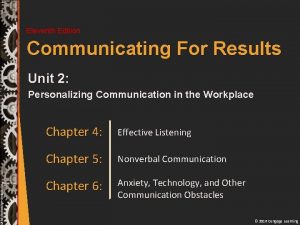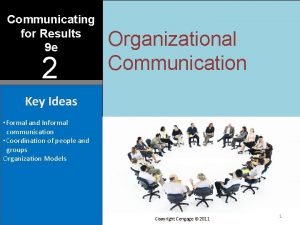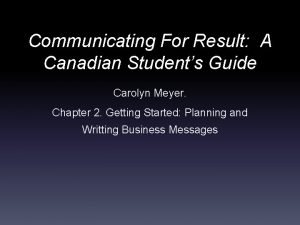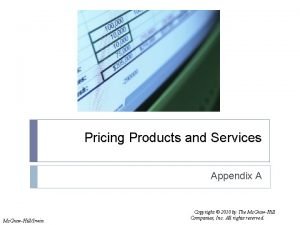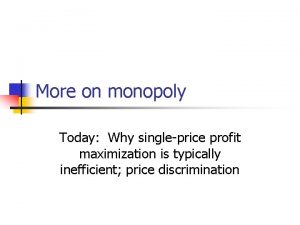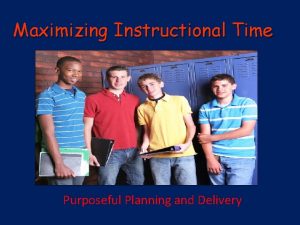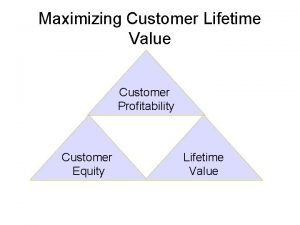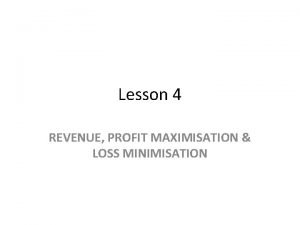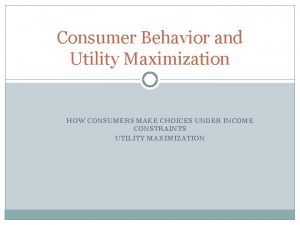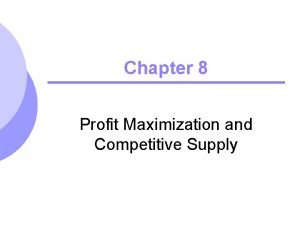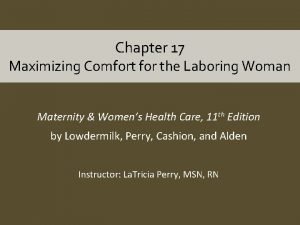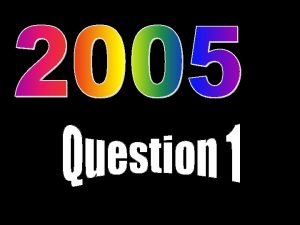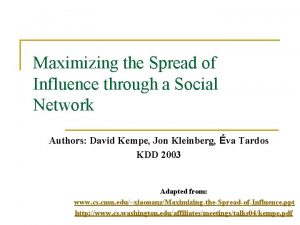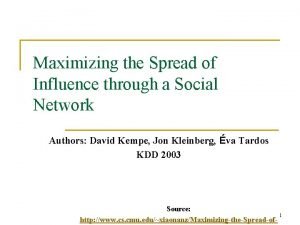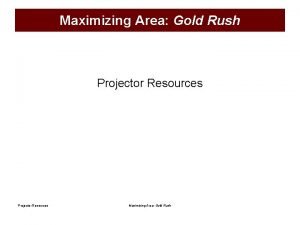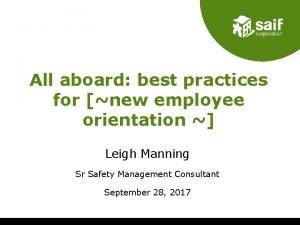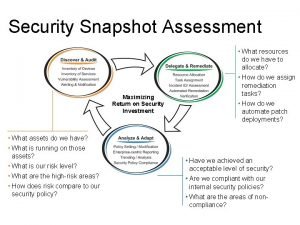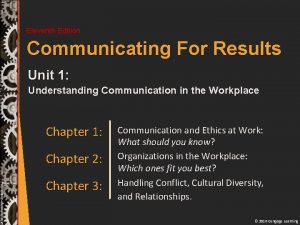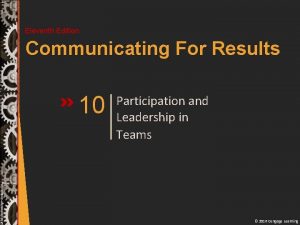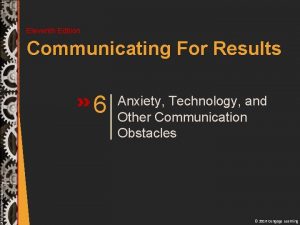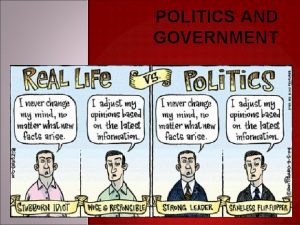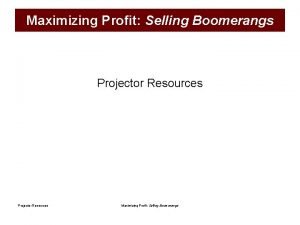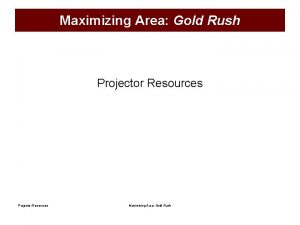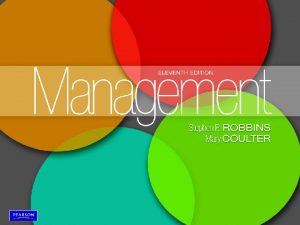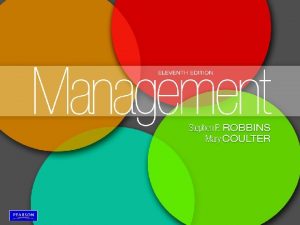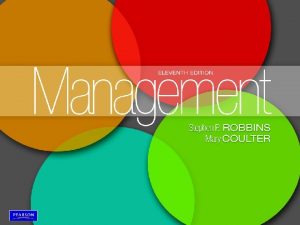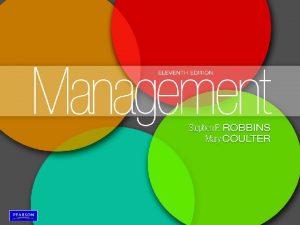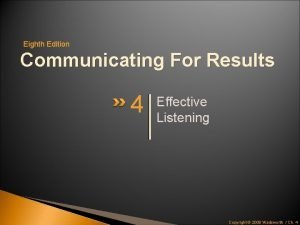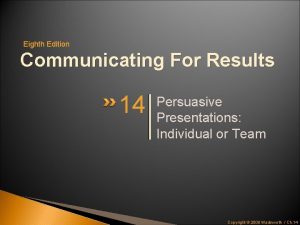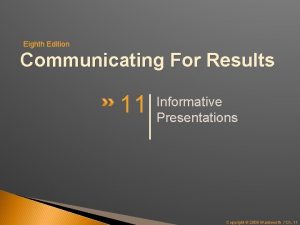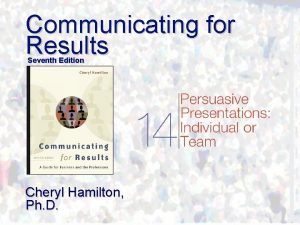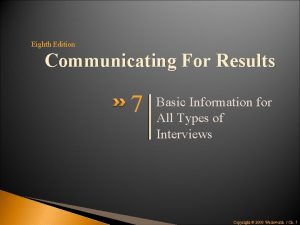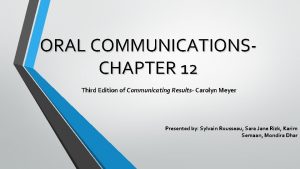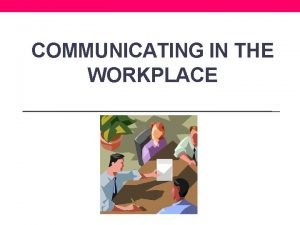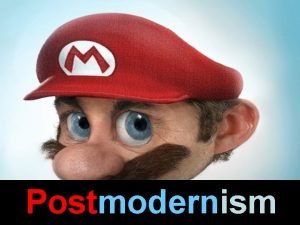Eleventh Edition Communicating For Results Unit 3 Maximizing





































- Slides: 37

Eleventh Edition Communicating For Results Unit 3: Maximizing Communication in the Workplace Chapter 7: Basic Information for All Types of Interviews Chapter 8: The Employment Interview Chapter 9: Small Group Communication and Problem Solving Chapter 10: Participation and Leadership in Teams © 2016 Cengage Learning

Eleventh Edition Communicating For Results 7 Basic Information for All Types of Interviews © 2016 Cengage Learning

Amazon: Real-Life Case Hiring Practices by “Bar Raiser” q Read or describe the real-life case. q Answer the questions for Ch. 7: − Type of questions asked by “bar raiser” companies and three sample questions? (Pg. 195) − What would be good & unacceptable answers to each question? (Pg. 195) − List some phone interview questions Amazon might use? © 2016 Cengage Learning

7 Really? “. . . just remember this little detail: you have ‘a search history’—on Google, Bing, or whatever search engine you typically use. That history records everything you’ve ever gone looking for, on the Internet” (pg. 22). To check out what’s there or delete some or all of your search history, go to: — http: //google. com/history — https: //bing. com/profile/history Bolles, R. N. (2015). What color is your parachute? 2016. Berkeley, CA: Ten Speed Press. © 2016 Cengage Learning

Interviews: Types and Phases © Phil Boorman/Age. Fotostock © 2016 Cengage Learning

Interview: Types Ten most common types. . . q q q Counseling Employment Exit Grievance Group © Phil Boorman/Age. Fotostock q q q Informational Interrogation Performance Persuasive Telephone/Skype © 2016 Cengage Learning

Group Interviews: Are You Ready? q Be prepared for confusion and noise. q Speak & make eye contact with everyone. q Don’t always speak first but show you are listening and involved. q Appear confident and in control. q Make answers brief, honest, and sincere— stick with them if questioned. Container Store uses group interviews “. . . for a glimpse of how candidates function as part of a team” (Powers, 2004). © Phil Boorman/Age. Fotostock © 2016 Cengage Learning

Two Group Interviews “Panel” Interview Bob Daemmrich/The Image Works More interviewees than interviewers © Phil Boorman/Age. Fotostock “Board” Interview Boston Globe/Getty Images More interviewers than interviewees © 2016 Cengage Learning

Informational Interviews Are You Ready? q q q Plan ahead the questions to ask Follow basic interview organization Take only minimal notes Ask follow-up questions Show you are listening Send thank-you note © Phil Boorman/Age. Fotostock © 2016 Cengage Learning

Two Informational Interviews Information-Giving AMAJEED/Getty Images Imparting important information © Phil Boorman/Age. Fotostock Information-Seeking Jon Feingersh/lconical/Getty Images Gathering information for future use © 2016 Cengage Learning

Let’s Practice! In groups, answer the following and share if asked: 1. From the information-seeking questions on pp. 201‒ 202, pick the three best. 2. Why are they the best? 3. List two other questions you might want to ask if you were researching for a possible job. Information-Seeking Jon Feingersh/lconical/Getty Images Gathering job information © Phil Boorman/Age. Fotostock © 2016 Cengage Learning

Telephone/Skype Interviews Are You Ready? q Always practice ahead using technology. q For Skype, remove clutter and turn on plenty of light; look into the camera (not the screen); dress professionally; smile. (See Mind. Tap video). q Check out company website. q Refer to company by name. q Make comments positive, clear, & brief. © Phil Boorman/Age. Fotostock © 2016 Cengage Learning

Interview: Phases Successful interviews are well organized. . . q Opening phase q Question-response phase q Closing phase © Phil Boorman/Age. Fotostock © 2016 Cengage Learning

Interview: Opening Phase Includes the following steps. . . q Rapport―to get-to-know each other q Orientation—to verify basic information q Motivation—to answer questions honestly and avoid false modesty. The initial 1 to 4 minutes of the interview may be the most important of the entire interview (Zunin & Zunin, 1994). © Phil Boorman/Age. Fotostock © 2016 Cengage Learning

Interview: Question Phase Think of this phase as a “conversation” between friends. . . q All participants should carefully prepare; decide what information to seek/what abilities to share. q Interviewers should use only lawful questions and a form to rate answers. q Interviewees should anticipate questions and possible answers to showcase abilities. Wrong decisions are expensive: To replace an employee can cost 1. 5 times a year’s salary (Lamb, et al. , 2013). © Phil Boorman/Age. Fotostock © 2016 Cengage Learning

Interview: Closing Phase A good closing leaves participants feeling excited. . . q Summarize major points covered; review skills/abilities as they fit job needs. q Allow interviewee to ask questions; if not offered, mention that you have questions. q Thank each other for time spent. q Include any agreement for follow-up. A warm, friendly smile and handshake leave a good, lasting impression. © Phil Boorman/Age. Fotostock © 2016 Cengage Learning

Using Questions Effectively © Phil Boorman/Age. Fotostock © 2016 Cengage Learning

Types of Interview Questions Click to see samples. . . q Open-Ended Questions “Tell me about yourself. ” “In your own words, evaluate your accomplishments this year. ” “Describe for me the ideal boss. ” “What social media do you use, why do you use it, and how often do you use it? ” (Adapted from Ryan, 2016, p. 57) “Describe a time during your current job when your work was criticized. Tell me how you responded and the outcome of the complaint. ” “Why are you leaving our company? ” “Tell me about your complaint. ” Open-ended questions—allow for any possible answer (but keep answers job-related). © Phil Boorman/Age. Fotostock © 2016 Cengage Learning

Types of Interview Questions Click to see samples. . . q Open-Ended Questions q Hypothetical Open Questions Hypothetical open questions—made-up situations about a specific interest; keep answers job-related. © Phil Boorman/Age. Fotostock © 2016 Cengage Learning

Types of Interview Questions Click to see samples. . . q Open-Ended Questions q Hypothetical Questions q Direct Questions Direct questions—require a short answer or a “yes” or “no” answer. © Phil Boorman/Age. Fotostock © 2016 Cengage Learning

Types of Interview Questions Click to see samples. . . q Open-Ended Questions q Hypothetical Questions q Direct Questions q Closed Questions Closed questions—are multiple choice questions with answer choices included. © Phil Boorman/Age. Fotostock © 2016 Cengage Learning

Types of Interview Questions (Cont. ) Click to see samples. . . q Loaded Questions Loaded questions—are trap questions impossible to answer and designed to make you emotional. © Phil Boorman/Age. Fotostock © 2016 Cengage Learning

Types of Interview Questions (Cont. ) Click to see samples. . . q Loaded Questions q Leading Questions Leading questions—imply the correct answer and are often used to see if the respondent is honest or a “yes person. ” © Phil Boorman/Age. Fotostock © 2016 Cengage Learning

Types of Interview Questions (Cont. ) Click to see samples. . . q Loaded Questions q Leading Questions q Third-Person Questions “What does your group think about the latest merger proposal? ” “Do the employees in your department think the new raise is fair? ” “How do you think management views the service customers receive from your department? ” Third-person questions—are phrased involving a third person to make embarrassing or personal questions feel less threatening © Phil Boorman/Age. Fotostock © 2016 Cengage Learning

Types of Interview Questions (Cont. ) Click to see samples. . . q Loaded Questions q Leading Questions q Third-Person Questions q Verbal (and Nonverbal) Probes Verbal probes—are used to encourage a longer, more detailed answer. © Phil Boorman/Age. Fotostock © 2016 Cengage Learning

Interview Question Control Expect the following control from each type question. . . © Phil Boorman/Age. Fotostock © 2016 Cengage Learning

7 Awareness Check Types of Questions. . . More questions on page 212; see answers in back of book © 2016 Cengage Learning

Let’s Practice! In dyads, practice asking and answering the following: 1. “Tell me about yourself. ” 2. “What social media do you use and why do you use it? ” NOTE: Pretend this is a “real” interview— keep answers to 1 minute; relate answers to the workplace; smile; keep good eye contact; give examples when possible; omit using uh and um. When finished: Rate each other on a scale of 1 (poor) to 5 (Excellent). What improvement is needed? Repeat if time allows. © Phil Boorman/Age. Fotostock © 2016 Cengage Learning

Basic Interview Organization © Phil Boorman/Age. Fotostock © 2016 Cengage Learning

Organizing Questions q Funnel Sequence—from open to closed © Phil Boorman/Age. Fotostock © 2016 Cengage Learning

Organizing Questions q Funnel Sequence q Inverted Funnel Sequence—closed to open © Phil Boorman/Age. Fotostock © 2016 Cengage Learning

Organizing Questions q Funnel Sequence q Inverted Funnel Sequence q Hourglass Sequence—open-closed-open © Phil Boorman/Age. Fotostock © 2016 Cengage Learning

Organizing Questions q Funnel Sequence q Inverted Funnel Sequence q Hourglass Sequence q Diamond Sequence—closed-open-closed 1. “Whom do you recommend as director of the Harrison project—Jackson, Shelton, or yourself? ” (closed) 2. “What makes you say that? ” (verbal probe) 3. “Then you feel that Jackson has more experience than Shelton or yourself? ” (direct) 4. “In light of your answer, tell me what other qualities you see as important for a project director. ” (open-ended) 5. “Describe how well Jackson meets these additional leadership qualities. ” (open-ended) 6. “Is there a time when Jackson has not demonstrated these qualities? ” (direct) 7. “So, in light of this new information, whom do you recommend as director of the Harrison project—Jackson, Shelton, or yourself? ” (closed) © Phil Boorman/Age. Fotostock © 2016 Cengage Learning

Answering Questions Which two of the following are the most valuable? Why? q Practice so you can relax and be yourself. q If caught off guard, don’t rush answer. q If don’t know or remember, say so. q Don’t say more than you want to say. q Use open-ended questions as chance to present personal skills. q Listen carefully. © Phil Boorman/Age. Fotostock © 2016 Cengage Learning

Answering Questions (Cont. ) Which of the following causes real problems for interviewees? Why? q When asked direct questions, watch inter-viewer’s face—short/long answers desired? q Don’t let closed questions limit your answers. q Avoid saying yes or no to loaded questions. q Beware of leading questions. q Be aware that third-person questions are aimed at getting you to say more. © Phil Boorman/Age. Fotostock © 2016 Cengage Learning

7 Polishing Career Skills Test Your knowledge about interview questions Directions: Identify each question below. Is it (A) funnel sequence, (B) Panel, (C) Board, (D) closed, (E) loaded, (F) leading, (G) third-person, (H) a verbal probe, (I) direct/specific, (j) information-seeking, (k) open-ended. ___ 1. Gives interviewers (people interviewing) the most control? ___ 2. Gives interviewees (people being interviewed) the most control? ___ 3. Asks for a yes or no response or a short answer? ___ 4. Used when there are more interviewers than interviewees? ___ 5. Before conducting an actual interview, interviewees should conduct 10 or more of which type? ___ 6. When is it important to speak to more people than just the interviewer? ___ 7. Question that includes multiple-choice answers within the question? ___ 8. Question designed to get an emotional response from the interviewee? ___ 9. A single word or phrase designed to get more information from the interviewee? ___ 10. Begins with an open or hypothetical question and ends with a direct or closed question? ___ 11. Question that makes embarrassing information less threatening for the interviewee? ___ 12. Question that implies the correct answer within the question? See Mind. Tap or page 216 for answers and © 2016 Cengage Learning assessment.

7 The End © 2016 Cengage Learning
 Communicating for results 11th edition
Communicating for results 11th edition Communicating for results 11th edition
Communicating for results 11th edition Management eleventh edition stephen p robbins
Management eleventh edition stephen p robbins Management eleventh edition stephen p robbins
Management eleventh edition stephen p robbins Management eleventh edition
Management eleventh edition Management eleventh edition
Management eleventh edition Silk glove sign procedure
Silk glove sign procedure Communicating for results a canadian student’s guide
Communicating for results a canadian student’s guide Bhore committee
Bhore committee Eleventh 5 year plan
Eleventh 5 year plan Thfive
Thfive For his eleventh birthday elvis presley
For his eleventh birthday elvis presley Mis chapter 6
Mis chapter 6 Chapter 1
Chapter 1 Simultaneous multithreading: maximizing on-chip parallelism
Simultaneous multithreading: maximizing on-chip parallelism Profit-maximizing price formula
Profit-maximizing price formula Profit maximizing price
Profit maximizing price Single price monopoly graph
Single price monopoly graph Maximizing instructional time in the classroom
Maximizing instructional time in the classroom Maximizing customer lifetime value
Maximizing customer lifetime value Profit maximizing output
Profit maximizing output Utility maximizing combination
Utility maximizing combination Profit maximization and competitive supply
Profit maximization and competitive supply Chapter 17 maximizing comfort for the laboring woman
Chapter 17 maximizing comfort for the laboring woman Best milk a typical profit-maximizing dairy firm
Best milk a typical profit-maximizing dairy firm Maximizing the spread of influence through a social network
Maximizing the spread of influence through a social network Maximizing the spread of influence through a social network
Maximizing the spread of influence through a social network Maximizing area
Maximizing area Onboarding new employees maximizing success
Onboarding new employees maximizing success Profit maximization
Profit maximization Motor power constant
Motor power constant Maximizing security roi
Maximizing security roi Unit 10, unit 10 review tests, unit 10 general test
Unit 10, unit 10 review tests, unit 10 general test Iso 22301 utbildning
Iso 22301 utbildning Novell typiska drag
Novell typiska drag Tack för att ni lyssnade bild
Tack för att ni lyssnade bild Vad står k.r.å.k.a.n för
Vad står k.r.å.k.a.n för Shingelfrisyren
Shingelfrisyren
